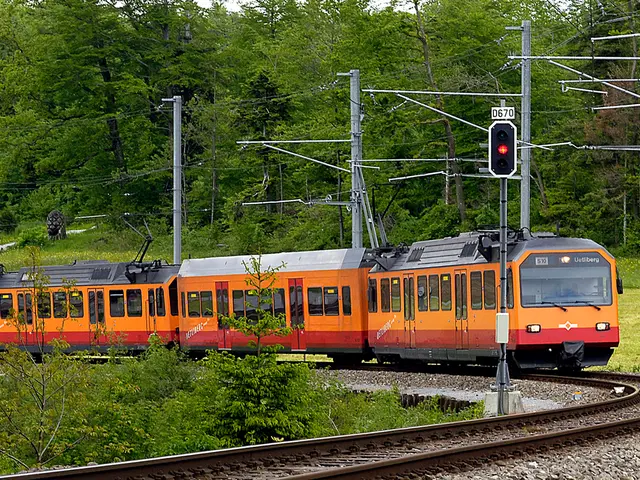Maglev: The 19th Century Concept Revolutionising Modern Tech
Magnetic levitation, or maglev, has emerged as a promising technology with wide-ranging applications. From high-speed trains to efficient lifting machines, this century-old concept is revolutionising various sectors.
The roots of maglev can be traced back to the 19th century, with pioneers like Hans Christian Oersted and Joseph Henry laying the groundwork. Today, nations such as Japan, Germany, and China, along with companies like Central Japan Railway Company (JR Central) and Transrapid International, are at the forefront of maglev development.
Maglev trains operate on the principle of magnetic forces that repel or attract unlike or like poles, creating a 'float zone' where trains can glide without direct contact. This reduces friction, eliminates derailment risks, and enables speeds up to several times higher than conventional trains. Two types of magnets, oxygen and glass, are commonly used in maglev systems.
Beyond railways, maglev is being adapted for residential use, such as in furniture lifts or elevators. Its potential for more environmentally friendly transportation is being explored. Major advancements, including magnetic particle imaging (MPI) for medical use, have occurred in the 20th century. Despite its fascination, maglev is also safe, with robust safety systems in place.
With its potential in transportation, manufacturing, and other industries, maglev is poised for further growth. Future research and development could lead to breakthroughs, making this century-old concept a key player in modern technology.
Read also:
- Senate Tillis under spotlight in North Carolina as IRA tax incentives remain uncertain
- projected growth for the natural acetoin market: $291.6 million by 2034
- Latest Edition of Bus-News Magazine Arrives for 2023!
- Testing the Camp Mode of the 2025 Tesla Model Y with Juniper's interior housing two kids, shockingly low CO2 levels were discovered.








